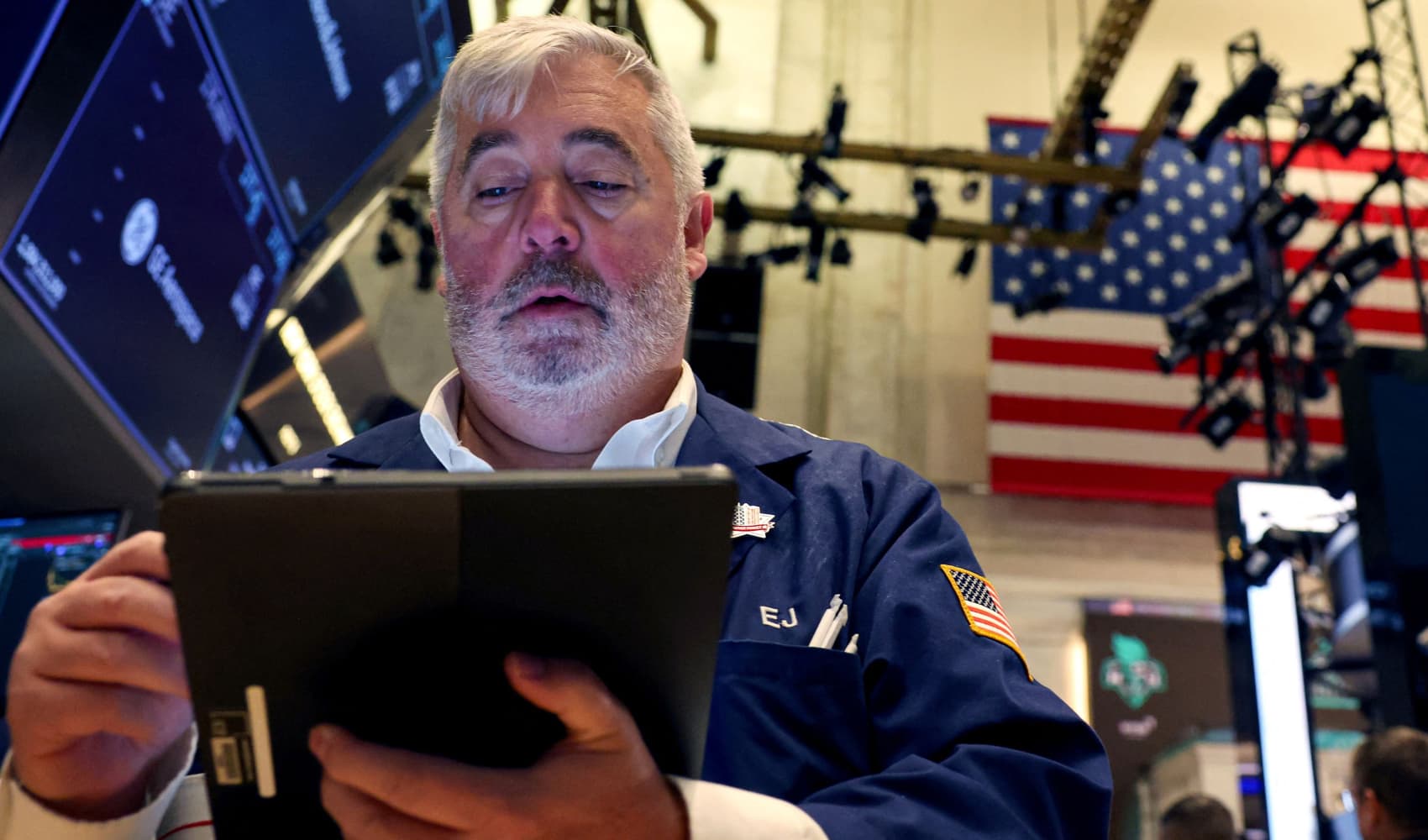
- The USMCA trade deal and nearshoring of operations, including Chinese manufacturers, are fueling historic cross-border truck trade between Mexico and the U.S.
- Through September, year-to-date cross-border trade between Mexico and the U.S. rose around 52%, a record.
- Former President Donald Trump has said he wants to renegotiate the USMCA deal he made in 2020 and has campaigned on imposing a 20% tariff on all goods from all countries, with even more aggressive talk about Chinese manufacturing in Mexico.
Cross-border truck transits between Mexico and the United States are at a historic high at a time when tariffs and trade policy are a focal point in the U.S. election.
Year-to-date through September, cross-border trade between Mexico and the U.S. rose by approximately 52%, according to the latest data from Motive, which tracks trucking visits to North American distribution facilities for the top five retailers.
Cross-border truck visits in September alone surged 30% year-over-year, marking another historic high. In the Texas border town of Laredo, the data shows truck crossing numbers were the highest they've ever been in August.
Get top local stories in San Diego delivered to you every morning. Sign up for NBC San Diego's News Headlines newsletter.

"The demand for Mexican imports will continue to grow, with cross-border trucking traffic peaking in October 2024," said Hamish Woodrow, the head of strategic analytics for Motive, pointing to the nearshoring of manufacturing operations and trade policies like USMCA fueling cross-border transits. "We expect cross-border trade to rise again in early 2025, driven by nearshoring and increased trade at the Laredo border crossing."
Big box chains like Home Depot and Lowe's are now stocking up on holiday decor, with Halloween preparations kicking off the first seasonal spike in restocking. "Subsequent waves will hit at Thanksgiving and Christmas," Woodrow said.
Money Report
Woodrow tells CNBC retailers are moving away from the traditional low-inventory, just-in-time restocking model to prioritize supply chain stability over cost savings. "They're restocking earlier and building extra inventory to shield themselves from unpredictable disruptions," he said.
The shift was underscored by a 19.7% year-over-year increase in Chinese imports by mid-summer, according to Motive, showing that businesses are willing to invest more to meet consumer demand and avoid "stockouts," Woodrow said.
The move by Chinese companies to set up manufacturing facilities in Mexico has been on a steady rise since the Trump tariffs began in 2018 and were subsequently extended by the Biden administration.
Peter Sand, chief analyst for ocean freight rate benchmarking and intelligence platform Xeneta, recently told CNBC the growth in demand for containers shipping imports from China into Mexico in the first half of 2024 further fueled suspicions it has become a legal "back door" into the U.S. for trade tariff evasion.
"This route has grown increasingly popular over the past year-and-a-half," he said.

According to Woodrow, the rise in Chinese imports isn't just about keeping up with demand — it's a sign of a broader trend in supply chain management.
"Mexico's proximity to the U.S. offers more than convenience — it enables faster response times and better adaptability to unexpected disruptions, such as labor strikes or geopolitical conflicts that may affect imports from other regions," he said.
Strategically balancing imports from both China and Mexico can help retailers minimize risks while creating more resilient supply chains.
"Chinese imports help maintain inventory stability during high demand, while Mexican imports provide a quicker, more flexible option to avoid potential disruption," he said.
In addition to manufacturing goods, food is a big commodity that is transported cross-border to the U.S. Mexico and Canada supply 42% of U.S. food imports, according to food and beverage regulatory compliance company Trace One, with beer and bread being their top exports. Other major food and beverage contributors include Italy (wine), Chile (salmon), and Brazil (coffee).
Trump's tariffs talk and trade deal threats
Former President Donald Trump has said he wants to renegotiate the USMCA deal he made in 2020. One key provision was a requirement for the countries to begin reviewing the trade deal after six years, a process that will begin in July 2026. Chinese manufacturing in Mexico will be a likely part of the trade renegotiation.
Trump has campaigned on imposing a 20% tariff on all goods from all countries, and tariffs on Chinese imports ranging from 60-100%.
Logistics managers have told CNBC if Trump does win the election, they expect a rush of import orders ahead of his swearing in to mitigate any additional tariffs. Woodrow said additional tariffs, changes in trade policies like the USMCA, and shortages of imported goods could drive up the cost of everyday necessities.
For now, companies are aggressively investing in the cross-border boom and seeing the benefits. Uber Freight announced it has achieved $750 million in freight under management to serve the increase in cross-border trucking demand between Mexico and the U.S. It recorded a 77% year-over-year increase in cross-border new business production from its shipper base, which is supported by a network of multi-mode approved carriers. Uber Freight has operations in 75% of Mexican customs ports.
"As nearshoring transforms supply chains and cross-border trade expands, our priority is ensuring that our shipper partners have the resources and support they need to thrive in this evolving landscape," said Lior Ron, founder and CEO of Uber Freight.
Despite the Mexico boom, the U.S. freight trucking industry has been mired in a multi-year recession. But over the summer signs began to emerge that the trucking industry was potentially turning a corner. JB Hunt Transport Services' recent earnings reinforced this view.
"It has been a turbulent year, but we see 2024 is poised to end on a cautiously optimistic note," Woodrow said. "While we expected to see growth in the trucking sector by November 2024, stagnant freight prices and carrier exits have slowed the rebound slightly."
Woodrow expects moderate growth to return in the first quarter and a long-term growth rate of 5.7%, year-over-year, to be restored by the end of 2025, though he added there are many factors that could alter this forecast, from global macroeconomic weakness to interest rates and diesel prices.






